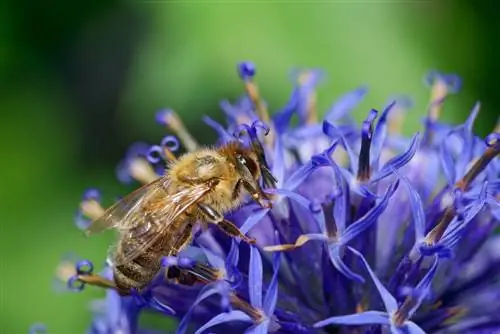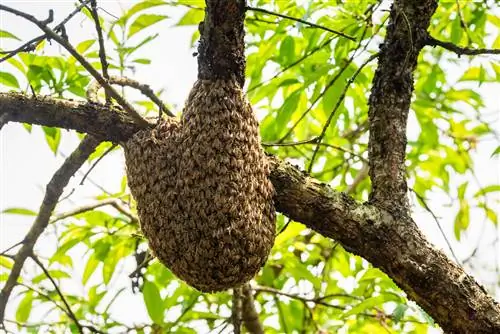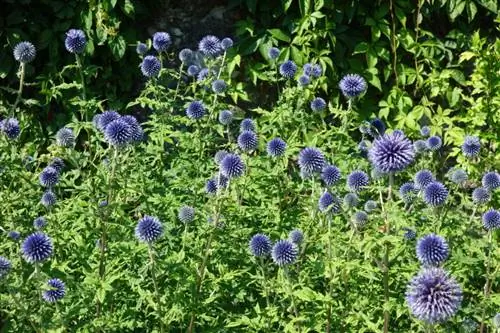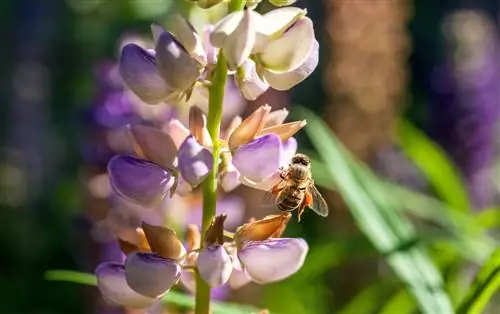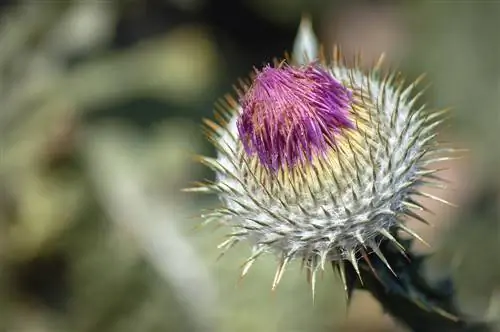- Author admin [email protected].
- Public 2023-12-25 17:45.
- Last modified 2025-01-23 11:22.
The ball thistle presents flower balls of up to 6 cm in size, which are enthroned high up on straight stems, when they are in bloom. The flowers can be admired from July to October. But are they also useful and interesting for bees?
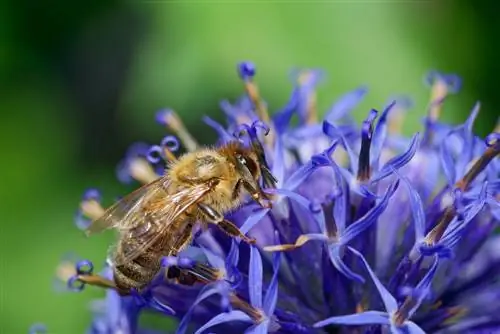
Why are globe thistles good for bees?
Bees love globe thistles because of their high nutritional value, as they are rich in nectar and pollen. They bloom from July to October and help bees to close gaps in their numbers during dry periods. Echinops ritro and Echinops bannaticus in particular are very bee-friendly.
Do bees like globe thistle?
Beeslovethe globe thistle. They buzz around her and her flower balls. Not only honey bees, but also wild bees are interested in the tubular flowers of the daisy family. Other plants are left aside for now, because the globe thistle is the coveted favorite of these insects.
Why are globe thistles bee-friendly?
Since the flowers of globe thistles are extremelynutrient-rich, they are considered bee-friendly. They contain lots of nectar. Their nectar value is 3. The pollen supply is also impressive and impresses the bee world. The pollen value is a factor of 2. In addition, globe thistles bloom for a relatively long time - from July to October - which makes them valuable for bees.
Which globe thistles are real bee magnets?
EspeciallyEchinops ritro (Ruthenian globe thistle) is a real bee magnet. The plant attracts bees with its steel-blue flowers and doesn't promise too much because it contains a high content of nectar and pollen. Also attractive to bees, but usually less commonly available commercially, is Echinops bannaticus (bannatic globe thistle). They both have similar location requirements and prefer to be in a sunny, warm and rather dry place. These candidates also require little care from a gardener.
Why are globe thistles so important for bees in dry times?
The globe thistles are enormously valuable for bees because they can close atradition gapin midsummer. It often happens Especially in recent years, due to long dry periods in the summer, only a few plants bloom and the bees fall into a gap in their numbers and therefore suffer from starvation. However, globe thistles are true survivors and can survive heat and dry periods without any problems. Here bees can rely on a reliable food supplier.
How do you create a bee pasture with globe thistles?
Plant several globe thistles, preferablydifferent varieties, so that bees can find a wide range of nectar and pollen. You can also combine the globe thistles wonderfully with other flowering plants. These include, for example, poppies and daisies.
Global thistles with blue flowers in particular are often visited by bees. So give preference to these.
Tip
A paradise for bees and other nectar seekers
Not only bees find globe thistles a valuable source of food. In addition, these hardy plants are also popular with butterflies, bumblebees and hoverflies. If you want to do something good for the insect world, rely on globe thistles!

